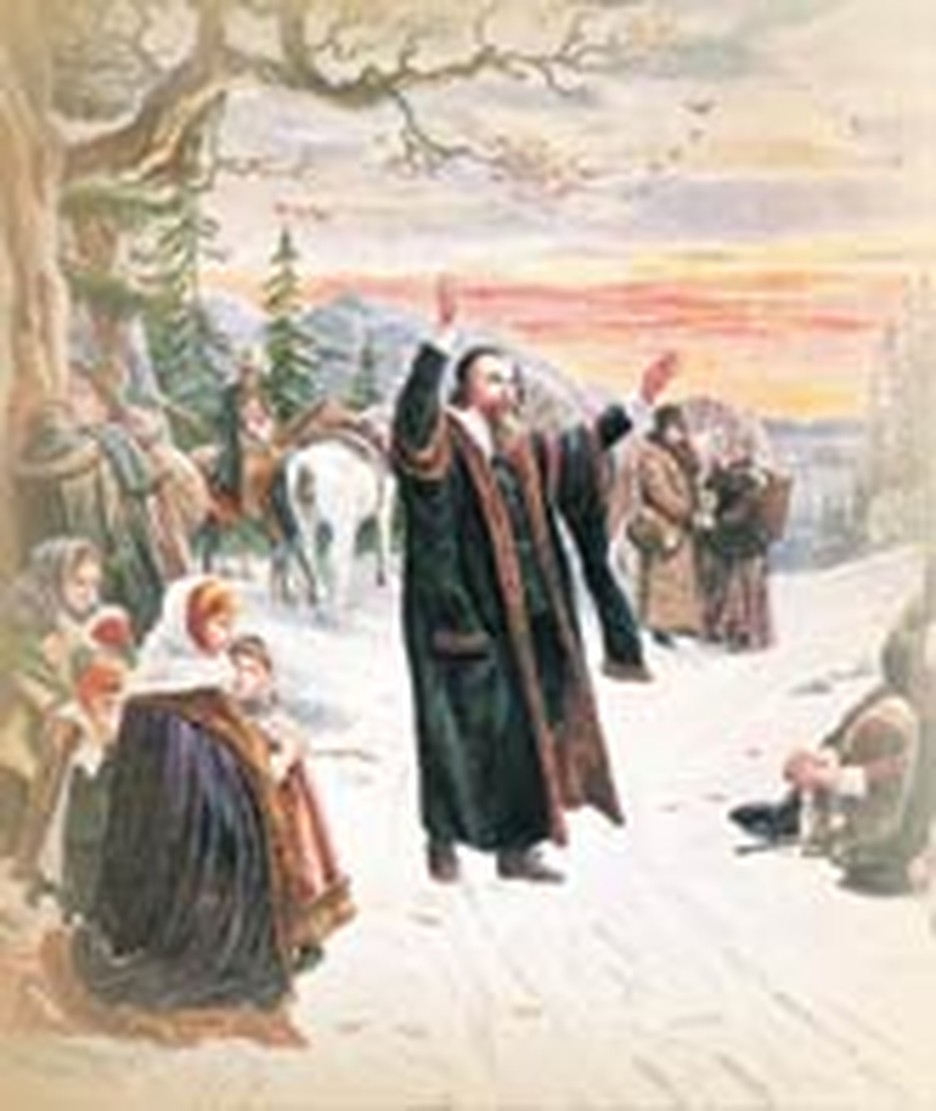
The first decades of the 20th century witnessed college students going to the mission field in record numbers. The Student Volunteer Movement, or the SVM, was at the center of this missionary thrust.
It all began in July, 1886, when Dwight L. Moody held a Bible study conference of collegiate chapters of the YMCA at Mount Hermon, Massachusetts. Two hundred and fifty men from eighty-seven colleges met for a month. Student Robert Wilder, who had founded the Princeton Foreign Missionary Society, arranged a set of special meetings on missions at the Mount Hermon Conference. Arthur T. Pierson spoke to the students and encouraged them to evangelize the world in their generation. One hundred students at the conference volunteered to serve in overseas missions.
The next school year, Robert Wilder and John Forman of Princeton traveled to 167 different schools sharing the vision of world evangelization. Two thousand one hundred and six more students volunteered for missions work. Within two years of the Mt. Hermon Conference, over 5,000 students had signed the simple pledge, "It is my purpose, if God permit, to become a foreign missionary."
In 1888, the Student Volunteer Movement was formally organized, and John R. Mott, one of the original Mt. Hermon 100, was chosen as chairman. "Evangelization of the world in this generation" became the society's watchword.
IMAGE LEFT: They stopped to pray for a "hidden seed." In this 1904 painting by J. F. Hettes, Comenius leads his battered brethren across snowy mountains into Poland in 1628. The hidden seed they prayed for was miraculously preserved in the Moravians who would launch the modern Protestant missionary movement.
Within five years of the Mt. Hermon Conference, there were 6,200 Student Volunteers from 352 schools in the US and Canada. Forty colleges and thirty-two seminaries were involved in supporting alumni who had gone overseas as Volunteers. Similar student movements began in Great Britain, Scandinavia, and South Africa.
The S.V.M. produced mission books and study programs to prepare students for missionary service and worked to maintain an active interest in missions at home. It challenged students entering careers to consider Christian missionary service as their life work. Firmly grounded in solid Biblical principles, the SVM developed in many students a burning vision for world evangelism. By 1945, a total of at least 20,500 Student Volunteers had reached the mission field, but the Student Volunteer Movement had already begun to seriously decline.
By 1959 the SVM merged with other organizations which ultimately formed the University Christian Movement, an organization mostly concerned with political and social issues rather than Christian evangelization. Christian students interested in missions formed the Student Foreign Missions Fellowship in 1938, a group which became the missionary department of Intervarsity Christian Fellowship in 1945. Since 1948, Intervarsity's conventions at Urbana, Illinois have challenged students to evangelize their world-the challenge SVM made generations before.
DISTANT DATELINE: 30 Years of War Over
WESTPHALIA OCTOBER, 1648. After a generation of warfare and five years of negotiations, peace has at last come to the German lands. Yesterday in Westphalia, representatives of France, Sweden, the Holy Roman emperor, and the German princes agreed to truce terms. It has been thirty devastating years of warfare. Now both Protestant and Catholic forces have realized neither is powerful enough to destroy the other; somehow they must live together with some degree of mutual tolerance. Under the terms of the Peace of Westphalia, the German princes once again are given the right to choose their religion and that of their subjects. Calvinism is now included as a religious option, along with Lutheranism and Catholicism. The Hapsburg emperors lose their power over the German states, and the Holy Roman Empire has suffered a severe setback. It is doubtful if any one power will ever arise to bring unity to the over 300 factious German states.
Representatives of Pope Innocent X have voiced their strong opposition to the peace term's exclusion of the papacy from the religious affairs in Germany. Since the days of Charlemagne, the church has maintained a strong alliance with the powers of the state. This now seems to be breaking apart.
Meanwhile the countryside is desolate. In many areas over half the population has been destroyed by the brutal fighting or the disease and famine which has followed. Though peace has come, the process of rebuilding will be a long one. Perhaps there is consolation in the thought that we surely have finally learned from all of this devastation. Is it not unthinkable that Europe could ever again be turned into a huge arena of destructive warfare?
In Praise of an unsung hero
Often when giving a history talk, I am asked who is my favorite hero in all church history. My answer is Jan Amos Comenius. He lived from 1592-1670. He is often called the "Father of Modern Education." He is perhaps second only to Jesus as the greatest teacher who ever lived. He made learning more a joy than a drudge, introduced visual aids, pioneered new methods of language training, and insisted on the education of girls, just to name a few contributions.
Comenius demonstrated what it means to live for Christ regardless of circumstances. His dreams were repeatedly shattered, yet he joyfully persisted. He agonized with his people, exiled from their homeland in the Thirty Years War (p. 1, 3) and driven to the verge of extinction, yet he never gave up hope. He nurtured and pastored a little church, the "hidden seed," that one day blossomed as the Moravian movement decades after his death. That little church quietly enriched the entire Body of Christ. Driven often to marginal existence Comenius nevertheless articulated a vision for raising children, living as Christians, and conducting international relations that the world has still not caught up with. His masterpiece Labyrinth of the World, suggestive in some ways of Bunyan's Pilgrims Progress, but written earlier, is a continuing inspiration for communicating Christian teachings in creative ways. -- Ken Curtis


